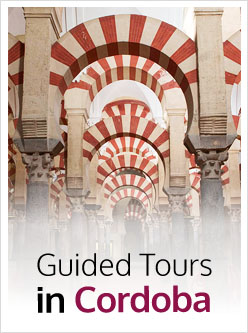The first historical account that takes us back to the construction of the so called Door of Forgiveness is found in an inscription decorating the pointed arch at the entrance. In spite of being incomplete, it can be read clearly: “…in the month of March of the era of the Caesar, the year one thousand and four hundred and fifteen, it is the King, the Highest and Most Powerful Enrrique King of Castilla and son of the High King Alfonso…“. The works finished in March 1377, and they were closely followed by the King Enrique II himself, who faced all the expenses. A proof of his interest was immortalised with his crest, located in the spandrels of the arch at the entrance.
Unlike other access doors of the Mosque-Cathedral, the Door of Forgiveness was not conceived as a single door, but as an ensemble. It consists of two horseshoe and pointed arches, one in the outside decorated with plasterwork and a parallel one inside, which finishes in the Orange tree courtyard. Inside there is enough space to house the doors when they are open. That same central space was covered in the 17th century by a bricked vault. In the middle of the following century, while Pedro de Salazar y Góngora was bishop, the ceiling was decorated with rich plaster mouldings with flowery motifs, where the crest of the mentioned bishop stood out, as well as four tondos with the images of the four Evangelists located on the pendentines. A cupola was erected in the centre.
The original façade from the 14th century is not preserved, as it suffered different remodellings. However, several descriptions have come to us, such as the one by Ambrosio de Morales in the 16th century: “…the arch is Moorish with a cornice over the right feet, so the round arch is lost and it becomes a circle as we can see in many arches by Goths and Moors. The doors are covered in bronze… The whole decoration of the door is made in very finely carved stucco, and on top there are six columns forming five alcoves, where there are now images painted with brush…“. Nieto Cumplido claims that Ambrosio de Morales does not mention the blind alcoves with lobed arches all along the pillars on both sides of the Door of Forgiveness, or the small arches displayed back then, not today, over the five mentioned ones, following the scheme of the old Muslim minaret. The primitive door was crowned by a roof supported by modillions.
The current look of the Door of Forgiveness is the result of the remodelling work led by Sebastián Vidal in the middle of the 17th century. Vidal respected the pointed arch, but he removed two of the five small blind lobed arches described by Ambrosio de Morales, and all the small arches acting as the Muslim minaret. However, he built a big blind round arch slightly diminished, resting on the two big pillars, and surrounding at the same time the three small lobed arches remaining from the 14th century. Over the mentioned arch, he made a big classical frieze decorated with triglyphs, which have a sculptural representation of “The Eternal Father” in the centre.
Each of the doors is almost 10 metres high and two metres wide. Made in pine tree wood covered by bronze plaques, they have two inscriptions remembering the remodelling works during the mandate of Bishop Pedro Salazar y Góngora: “they were rebuilt in the year 1739“.
Over the frescos inside the three small lobed arches, it is important to mention that they originally represented “The Virgin Mary” in the centre, and “Saint Lawrence” and “Saint Stephen” on the sides. In the middle of the 16th century they were changed: the two saints by the archangels “Saint Michael” and “Saint Raphael” and the central one by “The Assumption of the Virgin Mary“, all of them attributed to the painter from Córdoba Antonio del Castillo. Luis María de las Casas Deza refers to the paintings on the alcoves of the pilasters which are not preserved nowadays, and he claims that they represented, in the first place, “Saint Peter” and “Saint Paul” and further up, “Saint Acisclus” and “Saint Victory“, patron saints of the city.
If you are wondering what to visit in Córdoba, the best option would be the Mosque-Cathedral, choosing one of our guided tours. This way you will learn everything about the Door of Forgiveness. Choosing to do high quality sightseeing is choosing ArtenCórdoba.
Text: J.A.S.C.


All the information about the monuments, festivals and places of interest in Cordoba… at a click!
If you want more information about the monuments of Cordoba, before doing your guided tours, here is the most complete guide, written by the tour guides and historians of our team
Over 2,000 items!
Mosque-Cathedral
Medina Azahara
Alcazar of the Christian Kings
Synagogue
The Museums
The Coutyards

All the information about the monuments, festivals and places of interest in Cordoba… at a click!
If you want more information about the monuments of Cordoba, before doing your guided tours, here is the most complete guide, written by the tour guides and historians of our team
Over 2,000 items!

















